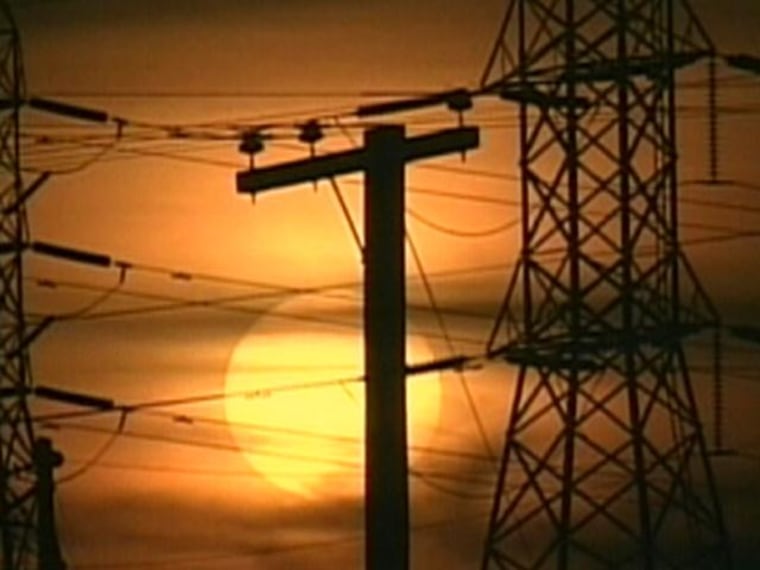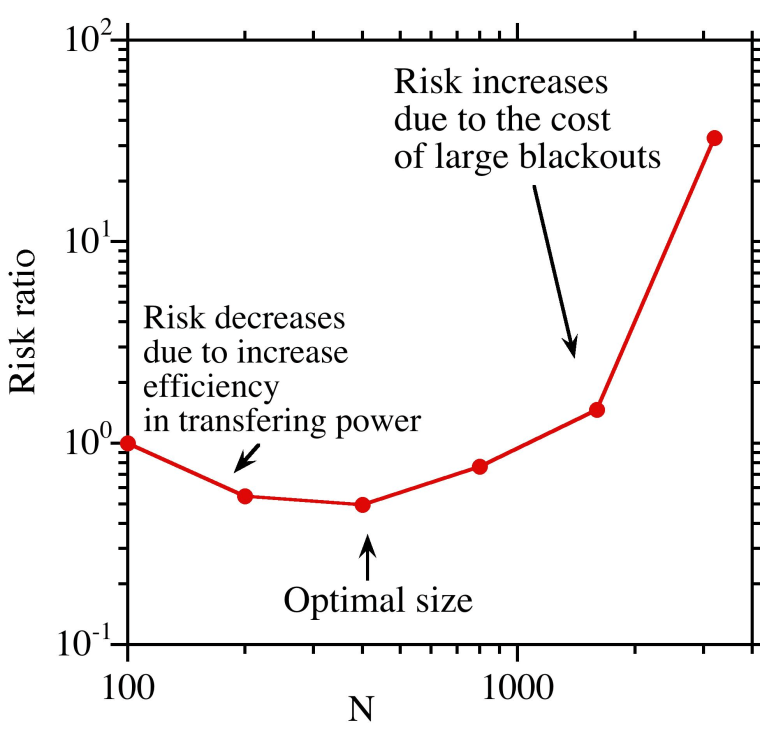In the story of the three bears, Goldilocks repeatedly finds the happy medium that's "just right" — and researchers say there's a happy medium for electrical power grids as well. The problem is, their calculations suggest the U.S. power grid isn't just right.
In a study published online Tuesday by the journal Chaos, two physicists and an engineer say the nation's electrical distribution system would face a lower risk of severe outages if it were divided into scores of gridlets rather than the three major grids that exist today for the East, the West and a large chunk of Texas.
They came to that conclusion by building a computerized model that simulated the structure of the western U.S. grid. They found that bigger can be better: It's easier to transfer power between sections of the grid to even out variations in supply and demand, and respond if one part of the grid goes down.

But if the grid gets too big, the risk of a large-scale blackout cancels out the advantages — especially when the grid is running at close to capacity.
Such a blackout occurred in 2003, when a short circuit in Cleveland touched off outages affecting 50 million people in the northeast U.S. and parts of Ontario.
The Western grid has more than 16,000 electricity-converting nodes, which include generators, substations and transformers. In comparison, when the scientists subjected their simulated grid to a series of virtual outages, they found that the optimal grid size was just 500 to 700 nodes.

The researchers say that having a larger number of smaller grids would reduce the risk of cascading, catastrophic failures — and they suggest that the same right-sizing philosophy might apply to the Internet and financial markets as well.
"If we reduce the number of connected pieces, maybe we can reduce the societal cost of failures," University of Alaska physicist David Newman, one of the study's authors, said in a news release.
Video: U.S. power grid gets a 'D' grade
In addition to Newman, the authors of "Does Size Matter?" include physicist Benjamin Carreras of BACV Solutions and Ian Dobson, an engineering professor at Iowa State University.